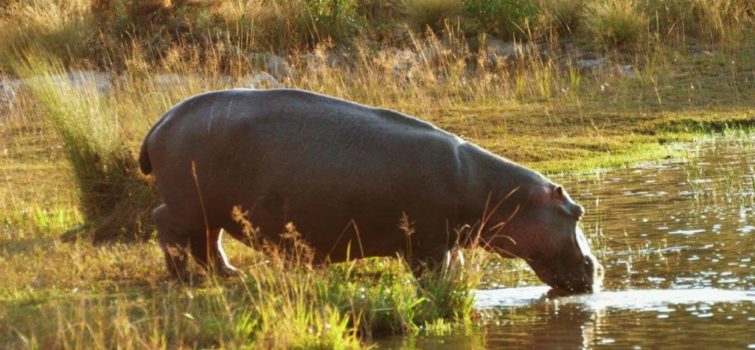Hippo “Look N’Gai, No Fishes!”
Hippopotamus Hippopotamus amphibius
It’s early winter in 2018 and Rhino Dam is a hive of activity. The last week of April saw the arrival of four adult hippos to the dam, having moved from Kromellenboog Dam far in the north of the reserve near Nyala plains. This group of hippo had often made the trek between these water bodies in the past, but something seemed different this time. The reserve had poor Summer rains at the beginning of the 2018 season, and although the rain improved in Autumn, this was too late for any substantial grass growth for grazers in parts of the reserve. We suspected the hippo had made the move to greener pastures because Kromellenboog Dam’s level was lower than usual.
Shortly after their arrival, two of the adults from the group left and made the journey back to Kromellenboog Dam. This is no mean feat as the distance covered in the night is close to 20km, as the crow flies. They left behind two adult hippo at Rhino Dam, which we suspected was a cow and a young adult bull. It was the last week of May 2018 and the mystery unfolded by way of a newborn hippo calf. This little hippo, whom we assumed is a male, kept us delighted as we watched him grow up to be a healthy one-year-old earlier this Winter.
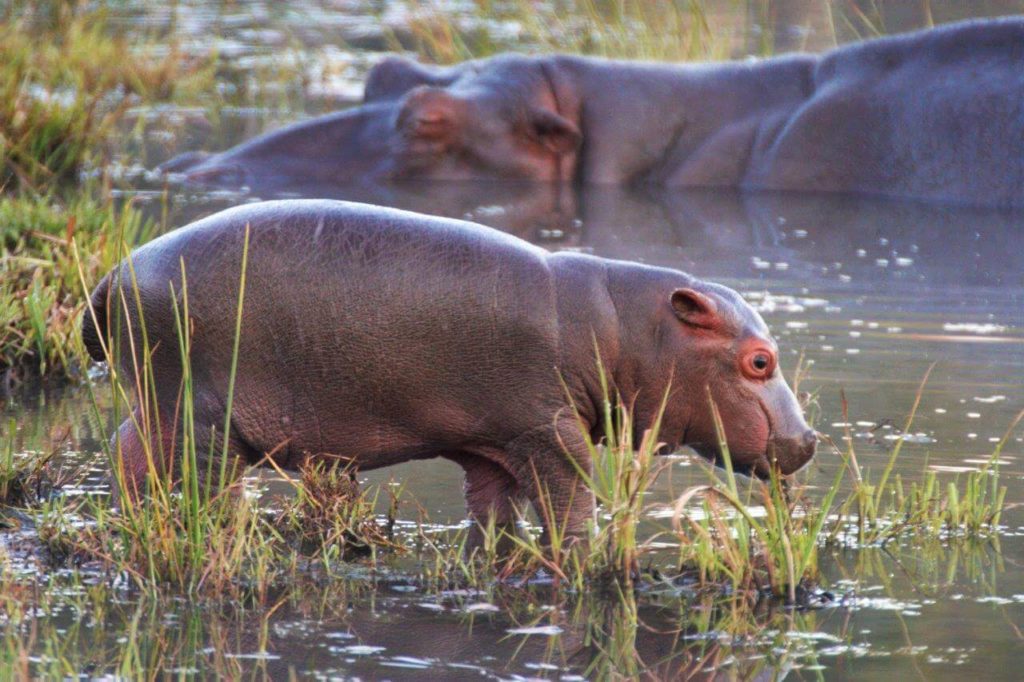
When he was about three months old, the second adult hippo we assumed to be a bull, left Rhino Dam, and the mother and her calf were left to fend for themselves, enjoying the space and peace the dam and surrounds offer. With plenty of good grazing in the area, the mother and son were content to remain at Rhino Dam.
It’s April 2019, and once again as Autumn begins, the three adult hippo from Kromellenboog Dam have made the 20km journey back to Rhino Dam, some 10 minutes from Makweti Safari Lodge. They have re-settled with the cow and her nearly one-year-old calf, and are enjoying the relatively good grazing in Fig Tree Plains and surrounding areas, following the good early Summer rains. What seems now to be a routine annual migration to this area, has once again turned into a birthing spectacle. It’s the 14th April 2019 and our hippo community in the northern part of the reserve welcomes a newborn calf.
It has been exciting to watch this little hippo discover the new world. We assume she is a female, although it’s difficult to tell at such a young age. She is often seen out in the mid-morning sun, with her mom, stretching her legs and exploring the dam surrounds with her one-year-old playmate.
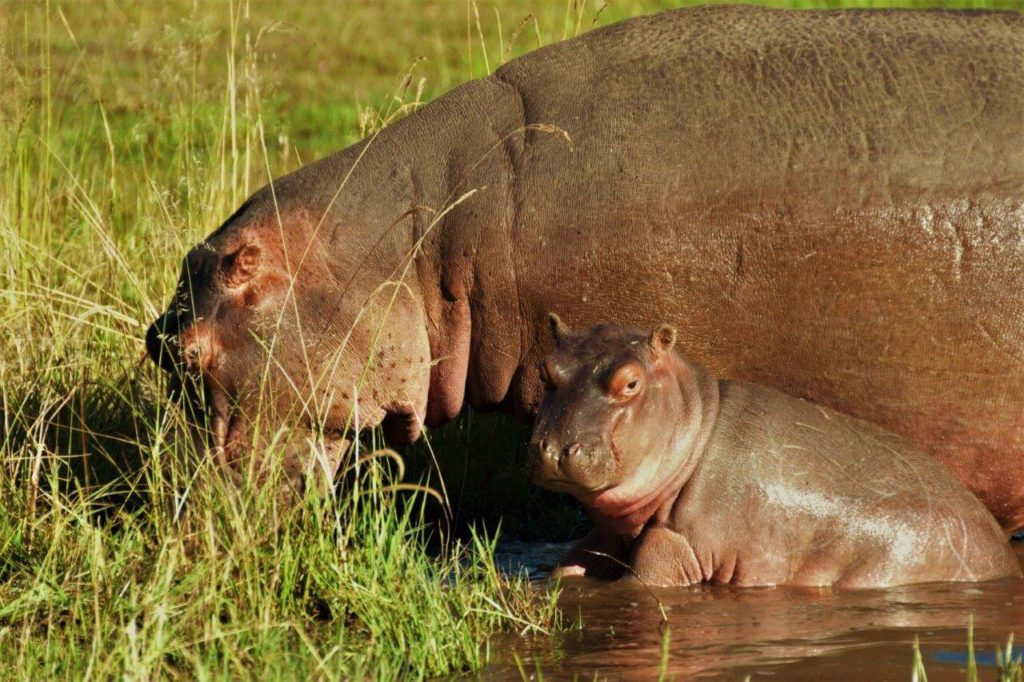
Interesting Hippo Facts
- A single calf is born to a female usually the end of Summer, although this can occur all year round
- Hippo calves are born under water in the shallows of the dams or water bodies that their mothers occupy
- A newborn calf weighs about 50kg and within a few minutes after birth, they are able to go into deep water
- Calves, like adults, cannot float, but can stay submerged underwater for up to two to three minutes, whereas adults will submerge themselves for close to six minutes
- A mom and her calf will stay away from the main group following the birth, to allow for the critical imprinting period for the calf, which is usually the first 10-14 days
- Female hippo are mature enough to give birth at four years, birthing at two-year intervals, where males only mature at 7 years
- Calves will suckle underwater, remaining underwater for short periods of about 30 seconds
- Calves will graze a little from one month, and more actively by five months, weaning completely at eight months
- Hippos are select grazers and will feed nocturnally up to 1km from water, eating up to 40kg in a night
- The noise that hippos make for territorial and courtship purposes is known as wheeze-honking
Watching the calves suckle is interesting. Early mornings, we will see the calves being more active, nudging their mothers and generally making a nuisance of themselves until the mothers relent. The mothers will roll onto their sides half submerged in shallow water, allowing the calf access to her mammae situated between her back legs. They will then submerge for short periods, emerging to breathe for a few seconds before drinking again.
The dominant bull for this group has taken on his role as protector of both young hippos seriously, and over the past four weeks I have seen increased territorial markings close to Rhino Dam and down into the Fig Tree and Ibhubesi Plains.
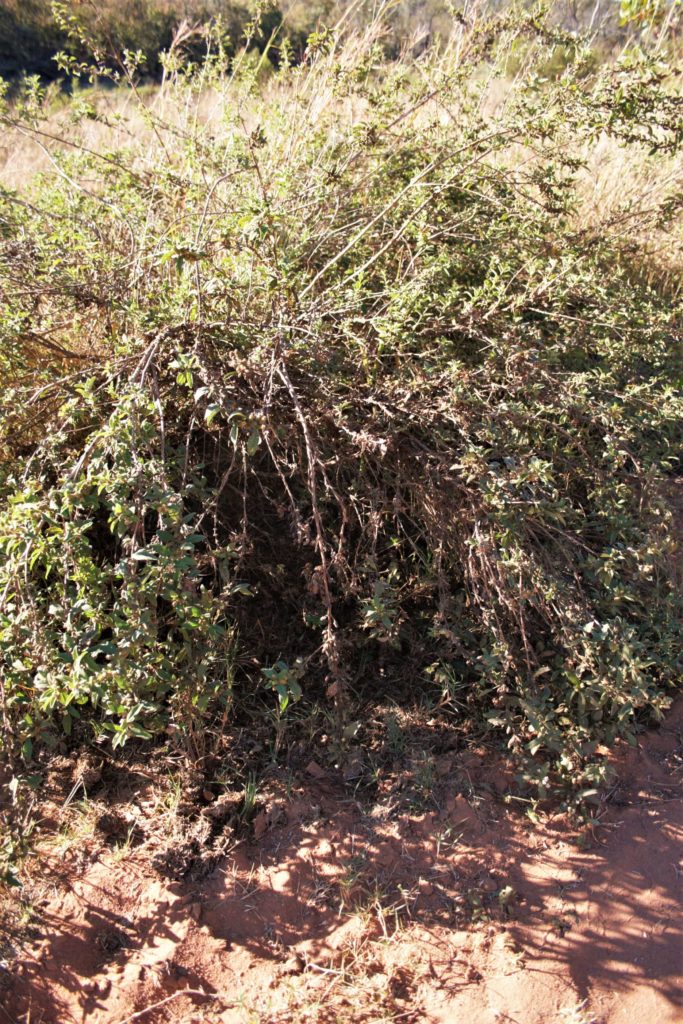
Dominant males will mark territory using their dung, which they scatter using their tales as a paddle. This is typically done on a small bush where the scattered dung will cover the bush accentuating his scent and act as a display to rival bulls that this territory is occupied.
It is interesting to note that this activity has stepped up, as I have previously not noticed this behaviour in this area of the reserve. Because of hippo’s social structures, dominant bulls usually only have access to a few females with which to mate. We can only assume that this male is the ‘father’ of both offspring born, as he has accepted both calves. Hippo bulls are known to display behaviour known as infanticide, where young calves are killed to encourage females to come into oestrus. Hippo calves rely on their mothers for a long period, up to three years. During this period, the females will not come into oestrus, as the production of milk limits their hormonal changes which brings about oestrus. Females with calves are not available to dominant males to mate with, and this creates tension for the bull in his group. Testosterone-charged bulls become frustrated and will at times harass calves, even killing them to stimulate females to come into oestrus. Hippos have a relatively short gestation period of eight months, and calves are usually born seasonally, at a time when rains are good, and water and food are sufficient for a mother to graze and produce sufficient milk. Male calves are at particular risk of infanticide as they get older, as dominant bulls will view them as a threat to potential females. Female calves are left alone, as a result of dominant bulls not viewing them as a threat to their domains.
An African Folk Tale
There are many wonderful, colourful and enchanting folk tales in Africa, and few as animating as the Kikuyu tale that speaks of the hippo and his dilemma with the Lord of Creation, N’Gai. The Kikuyu people believe that long ago, N’Gai the Lord of Creation planned all the animals and creatures for earth and decided where to put them, placing the hippopotamus in the forests and plains of Africa. But the hippo was greedy and fed hungrily on plenty of good food around him, making him fatter and fatter. The bigger he grew, the more he struggled in the midday heat of equatorial Africa. Everyday that he waddled down to the water to drink, the hjippo would gaze into the cool waters and was envious of the fish that swam freely in the waters supplied by the melting snows from Mount Kenya. The hippo pondered his dilemma for days and one day decided to approach N’Gai to ask him if he too could occupy the cool waters.
But N’Gai was not taking any of this, as his fish were precious to him and he was not convinced that the hippo would not change his feeding habits and eat his precious fish, and so hippo was denied his request. The hippo sadly returned to his plains and forests and hot midday sun. For some time, he pleaded with N’Gai to let him move into the waters and each time his request was denied. Hippo decided he simply had to convince Lord N’Gai and he came with up a solution.
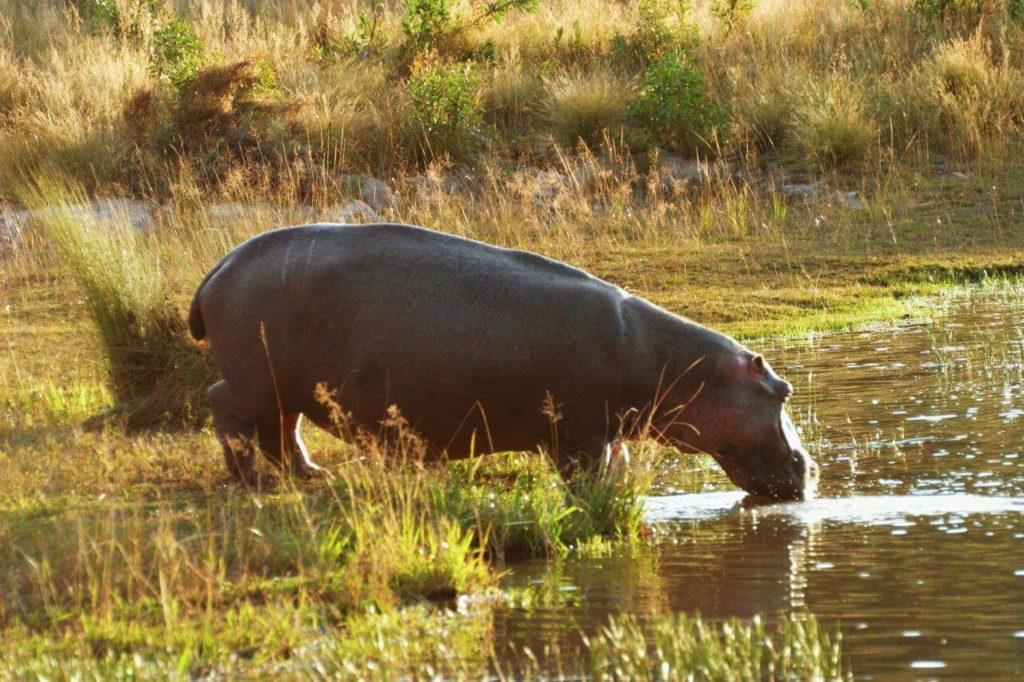
And so the hippo told Lord N’Gai that he would lie in the cool waters by day and at night come out and graze along the banks of the river and the vleis. He promised not to eat or disturb the fish. Lord N’Gai was not easily convinced and he did not believe the hippo would leave his previous fish, he needed proof of this promise. Hippo told N’Gai that at night he will come out of the water and every time that food passes through his body, he will scatter his dung to spread it out in Lord N’Gai’s sight so he could see there are no fish bones. His request was accepted and now it is said, that every night the hippo will emerge from the waters to feed and scatter his dung, looking to the heavens and saying “Look N’Gai, no fishes!”
Photographs and words: Neil Davison
References:
- Personal observations by the author on Welgevonden Game Reserve and other Reserves in Southern Africa
- Mammals of the Southern African Sub Region, J.D Skinner & R.H.N. Smithers, Second Edition, University of Pretoria: Mammal Research Institute, Pretoria, 1990
- Smithers Mammals of Southern Africa: A Field Guide, R.H.N Smithers, Third Edition, Southern Book Publishers, Johannesburg, 1996
- The Best of African Folklore, P. Savory, Struik Timmins Publishers, Cape Town, 1991
- Beat about the Bush – Mammals, Trevor Carnaby, First Edition, Jacana, Johannesburg, 2007

